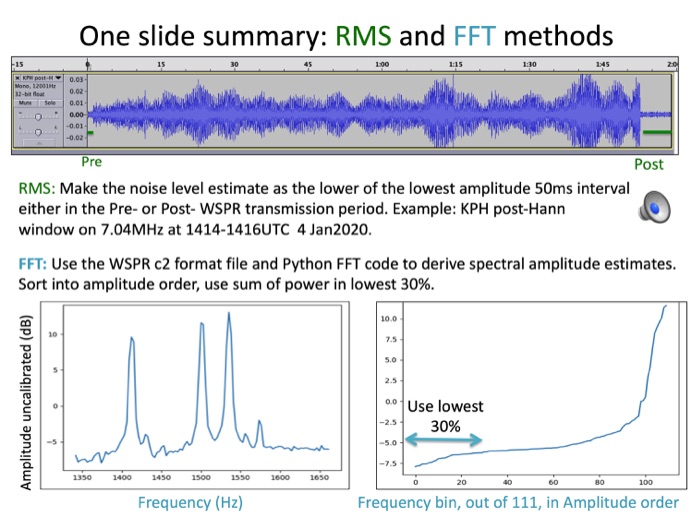The following are our working definitions of the data fields in our Timescale wsprdaemon_noise_s table. (Updated September 2021). There's a separate page for spots and wsprdaemon_spots_s data fields.
Variables uploaded to wsprdaemon_noise_s.

wsprdaemon_noise_s
Date and time
site
receiver
rx_grid
band
rms_level
c2_level
ov
UTC
An identifier for the reporting site, which may have multiple receivers, e.g. connected to different antennas, filters, optimised for certain bands etc. While usually a callsign, not always so, e.g. NorthernUtahSDR. Name is set by the usr in wsprdaemon.conf, but should be unique.
An identifier for a receiver at a site. There may be more than one receiver. Name is set by the usr in wsprdaemon.conf, and may not be unique, e.g. KIWI_1 in use by several sites. Hence, in any postgreSQL query it is important to include both site and receiver in the WHERE clause to be sure of extracting the wanted data.
4 or 6 character Maidenhead grid square. Map available here.
Band in metres for 2200 - 2 metres. When WsprDaemon reports spots from receivers on 70cm and 23cm those will be reported as 70 and 23. Note that the separate bands 80, 80eu, 60 and 60eu are available, with eu in lower case.
Noise level obtained using the sox utility as the quietest 50 milliseconds in the one second gap before a WSPR transmissions start or in the 8 seconds after it ends. Units are dBm in 1 Hz, but the absolute calibration offset is up to the user, as it can be set in wsprdaemon.conf. Hear an audio file snippet of an example (Hann windowed) transition from WSPR transmissions to noise at KPH on 40m.
Obtained from the 375Hz IQ samples *.c2 file generated by wsprd.c. In summary, the lowest 30% of the Fourier coefficients in a 320Hz band (the 200Hz WSPR band and 60Hz either side) are summed to derive this noise level estimate. Full details are in our report. The slide below summarises the rms and c2_fft methods.
For a KiwiSDR a count of the overloads reported by the kiwirecorder.py utility, the number of times the ADC overload/overflow has been detected.

WsprDaemon
Robust decoding and reporting for WSPR FST4W FT8 FT4 WWV WWVH CHU